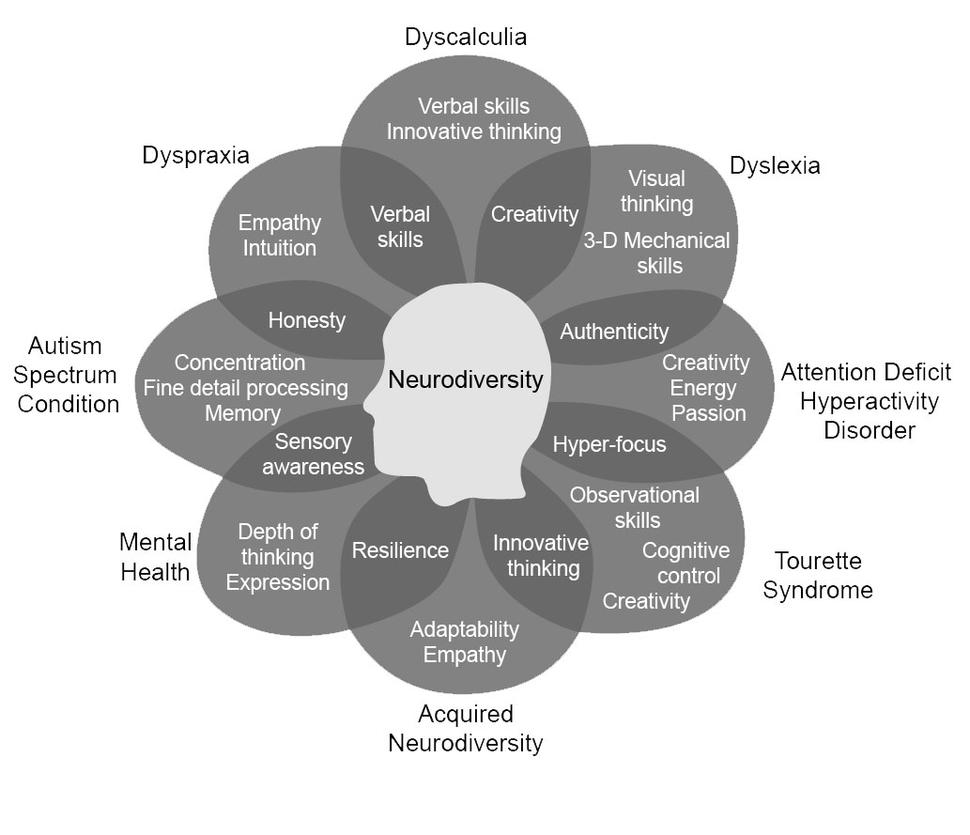Neurodiversity
, by DCEG Staff
Neurodiversity describes the variation in the human experience of the world, in school, at work, and through social relationships. Driven by both genetic and environmental factors, an estimated 15-20 percent of the world's population exhibits some form of neurodivergence.1-3 Neurodivergent conditions, including attention deficit hyperactivity disorder (ADHD) and autism spectrum disorder (ASD)4 are overrepresented in STEM fields.
While some neurodivergent characteristics (e.g., difficulty with organization, sensory issues) present challenges in traditional work or educational settings, neurodiverse individuals possess unique strengths that can improve productivity, quality, innovation, and engagement.5
Supervisors and mentors can promote neurodivergent-friendly environments by proactively offering:
- Telework, work from home, and remote work flexibility.
- Flexible work hours and modified workspaces (e.g., noise-cancelling headsets; alternative lighting, full-spectrum, or natural lighting products; written forms, prompts, and instructions; recorded directives, messages, materials).
Notably, these conditions are covered by the Americans with Disabilities Act and reasonable accommodations should be provided. Some resources are listed below.
- NIH Reasonable Accommodation Program and resources
- Job Accommodation Network provides detailed information for many conditions, including:
References
- Doyle N. Neurodiversity at work: A biopsychosocial model and the impact on working adults. Br Med Bull; 2020. doi: 10.1093/bmb/ldaa021.
- Centers for Disease Control and Prevention. Autism Spectrum Disorder Data and Statistics, 2022. Atlanta, Georgia: U.S. Department of Health and Human Services, Centers for Disease Control and Prevention.
- Centers for Disease Control and Prevention. Attention-Deficit / Hyperactivity Disorder (ADHD) Data and Statistics, 2021. Atlanta, Georgia: U.S. Department of Health and Human Services, Centers for Disease Control and Prevention.
- Wei X, Yu JW, Shattuck P, et al. Science, technology, engineering, and mathematics (STEM) participation among college students with an autism spectrum disorder. J Autism Dev Disord. Jul 2013; doi:10.1007/s10803-012-1700-z.
- Austin RD, Pisano GP. Neurodiversity as a Competitive Advantage. Harvard Business Review, 2017.
Browse the archive of monthly messages and learn more about the Inclusivity Minute project.
